
All categories
Featured selections
Trade Assurance
Buyer Central
Help Center
Get the app
Become a supplier

(41279 products available)








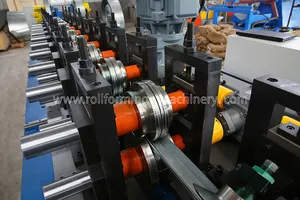


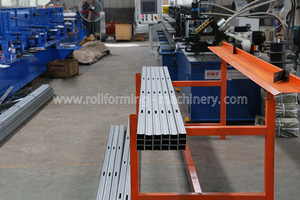


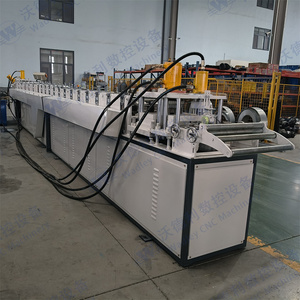



















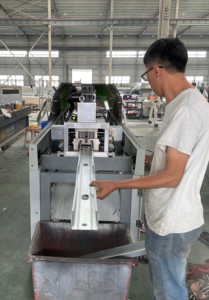

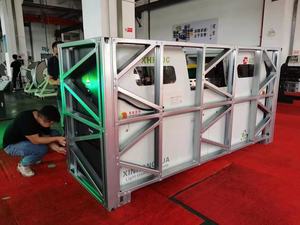

Profile roll forming is a type of manufacturing process used to create complex shapes and profiles by rolling material into different forms. The materials used in roll forming machines can be made of metal, plastic, and other solid materials.
Metal roll forming machine
The most common form of roll forming is metal roll forming machines, such as steel roll forming machines, which continuously bend metal into parts or shapes with one-axis curves. Generally speaking, a metal roll forming machine is appropriate for harder materials. This machine can use aluminum, copper, brass, steel, stainless steel, and other pure metal alloys as roll forming materials to make various metal forms, trims, and metals with different specifications and requirements.
Plastic roll forming
A plastic roll forming is made of plastic products, which are often made of polymer-based materials such as polypropylene or polystyrene. Plastic roll formings are typically lightweight and rustproof. They are easy to install and suitable for heavy-duty or long-lasting uses. Also, the temperature requirement of the plastic roll forming is always lower than that of the metal roll forming.
Carpet roll forming
A carpet roll forming is an essential production device for the automotive industry. It can produce carpets for the trunk, passenger area, floor, sound insulation, and sealing parts. The equipment can complete the whole manufacturing process, including material unwinding, forming, hot pressing, die-cutting, and material winding, all in one go. This integration enhances production efficiency while maintaining quality. Furthermore, the technical parameters of the entire machine are adjustable, enabling it to cater to various types of carpets and foam materials, which means it has versatile adaptability and can meet different manufacturing demands.
Specifications of the roll forming machine vary depending on particular requirements of applications or features wanted for machines being made at this stage in history today. Some common ones include material thickness range; production speed; cutting accuracy; etc.
Maintaining a roll forming machine is essential for ensuring its longevity and performance. Here are some maintenance tips:
The profile roll forming machines have many applications in big, mid-sized, and small industries. The machines give various metal parts that have exceptional quality at less price.
When selecting a roll forming machine, the machinery's quality and performance are essential for producing large quantities of roll formed products. Focus on the following key features:
Production speed:
The forming speed of a roll forming line can impact the efficiency of production. Different roll forming machines have various speeds depending on the material and the complexity of the profile. Longer speeds range from 10 to 30 meters per minute. The speed can be increased if a quick-change roll set is used.
Types of materials:
Profile roll forming machines can manufacture various construction materials. Buyers need to check if the material required for a specific application can be made with the machine they want to purchase. For example, lightweight aluminum extrusion roll forming is a popular method for manufacturing aluminum components.
The accuracy of dimensions:
Precision is a critical advantage of profile roll forming machines. The machine can create complex profiles with a repeatability of ±0.5mm. Precision cutting and punching allow for the exact fitting of joints, and the automated CNC system ensures consistent, accurate results.
Automation:
Choose the level of automation required, as automatic roll forming machines with CNC controls and fully integrated systems can improve production efficiency. Manual machines may be more affordable but also require more labor and time to operate.
Flexible production:
Some roll forming machines can adapt quickly to produce different shapes by using a quick-change roll set. This flexibility can reduce downtime and increase productivity.
Quality of components:
The forming machine's quality, such as the cutting system, drive system, and control system, affects performance. Choose the machine with the most advanced technology for reliable production.
Folded edges:
A machine that has a movable clamp can correctly fit and align the sheet inside the forming section. The folded edges of the sheets also provide additional strength. Examine the kind of clamping mechanism used to hold the pre-forming sheet in place.
Structural supports:
When selecting a roll forming machine, consider how the structure is supported. Long span sections need a lot of physical supports to ensure that there is no sagging during the process. Structural supports also ensure that the section is accurately formed in its designed shape.
Q1: What is roll forming?
A1: Roll forming is a manufacturing process used to create long, bent products with consistent shapes by sequentially passing a metal strip through a series of rollers.
Q2: What are profile roll forming machines made of?
A2: Profile roll forming machines are typically made of high-carbon steel, alloy steel, or other materials with suitable strength and durability to ensure the machine's stability and forming precision during the roll forming process.
Q3: How are profile roll forming machines maintained?
A3: The maintenance of profile roll forming machines includes regular cleaning, lubricating the machine components, checking the fastening and electric parts, inspecting and repairing the rollers and cutters, and maintaining the weighing and positioning devices.
Q4: What are the application of profile roll forming machines?
A4: Profile roll forming machines are commonly used in the construction, automotive, electronics, and machinery industries. They are used to make various complex-shaped profiles such as ceiling beams, window frames, steel brackets, cable trays, garage doors, radiators, and more.